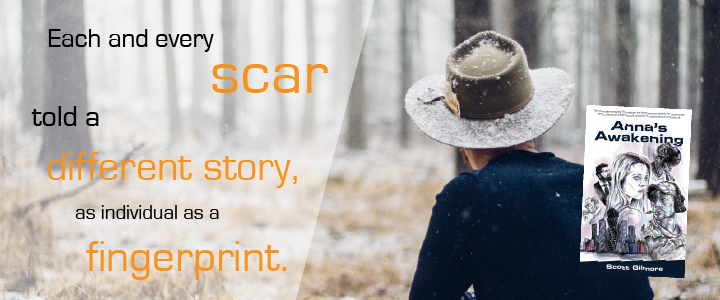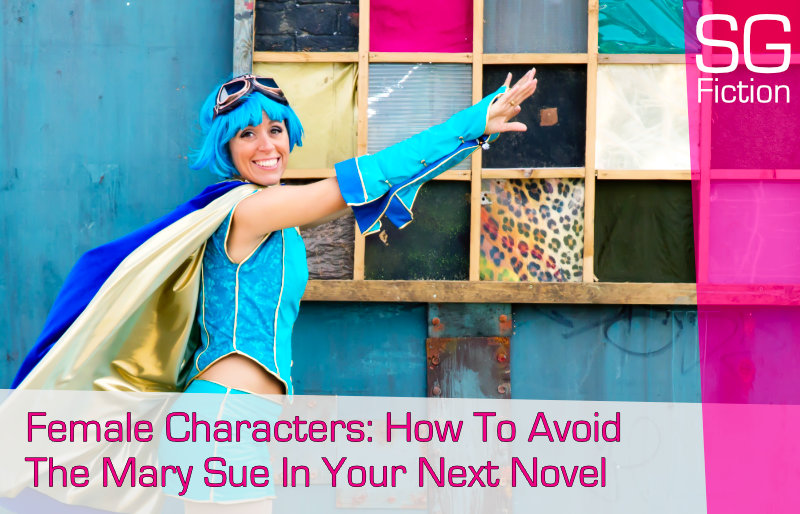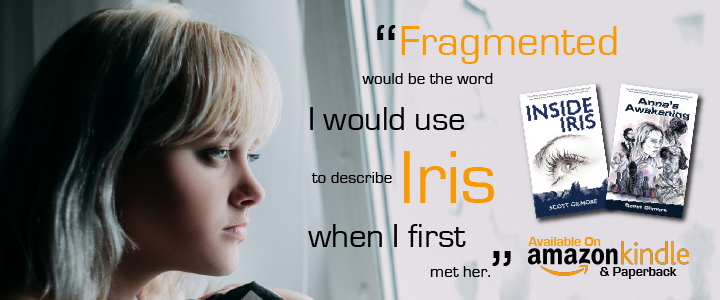Female characters are among my favourite protagonists on screen and in fiction. However, strong female characters have been diluted lately. Here’s how to avoid the Mary Sue in your next novel.
In this Female Characters article, you will find information in these areas:
- What a Mary Sue is and how you are able to avoid the pit falls of such characters,
- Why Female Characters Need Flaws to ensure your readers can identify with them, allowing for a greater attachment to the character as a whole,
- Showing Personal Struggle & Growth, allowing your characters to confront and overcome organic issues, gives them a chance to develop as a person,
- Why being Loved By Everyone paints a false reality and robs writers of creating complex interactions that can enrich your story,
- Why strong Female Characters are important for storytelling, but need to be crafted with realistic struggles, flaws, and goals.
Read the rest of the Female Characters article and consider how you can avoid writing a Mary Sue lead for your next story.
Female characters can be amazing, and some are among my favourite protagonists on screen and in fiction. There is no doubt that there is a genuine need for strong female characters to be given the forefront in novels, TV and movies that are currently being written as we speak. However, the cult of ‘The Mary Sue’ has diluted the female leads that we have been given over the past few years.
As a fiction author, I love nothing more than seeing a character, male or female, face multiple obstacles, have their hopes dashed and rise from the ashes to defeat the overarching enemy in the end. The reason readers and viewers love these characters so much is because they can identify with them and empathise with their struggle.
Some of my favourite characters have been female, such as:
- Sarah Connor in Terminator,
- Hermione Granger in Harry Potter,
- ‘The Bride’ in Kill Bill, and
- Ellen Ripley in Alien.
These females are strong, detailed and have respect for all the right reasons. When looking at ladies, such as these, we see a female character who is strong in her own right. The reason for this is simple: they were written for that reason from the ground up. Within these characters, we see both likeable and unlikeable traits. We see flaws and strengths as well as internal and external struggles.
In this article, I look to expand my creative writing blog by sharing some of the Mary Sue traits and how you can ensure your female protagonist is one who can stand up to the test of time.
What Is A Mary Sue?
Lately, the term Mary Sue has become almost weaponised among bloggers and YouTubers to label somewhat invincible female characters in movies, TV shows and fiction. The current trend of including more female characters has been seen in such archetypal franchises as Star Wars, Doctor Who, and James Bond. With such a sweeping movement attracting scathing criticism from long-term, die-hard fans, one has to wonder whether this is the shape of things to come.
The key Mary Sue traits include:
- An average female who is stunningly beautiful to others,
- An extremely talented girl with little training or ‘graft’,
- Is destined to fulfil some form of prophecy,
- Is utterly flawless,
- Is loved and revered by everyone she comes into contact with, and
- Faces little or no struggle throughout her story arc.
These are the general traits that a Mary Sue character possesses and, from a storytelling point of view, leads to very generic stories that viewers or readers can feel little investment in. As a writer, you may not necessarily plan for your character to be a Mary Sue, but the characteristics can creep into her overall makeup.
Here are some creative writing tips to help avoid creating a female character who comes across as a Mary Sue.

Female Characters Need Flaws
When we look at people in real-life, they possess flaws that are viewed both internally and externally by those around us. This should be the same with any character you create, whether they are male or female.
If we mean for our female characters to be relatable to those who buy our novel or watch our movie, we need to show that they are as flawed as the people who take the journey with them. Even if the character is an anti-hero, there have to be features within them that we can relate to.
Some of the most relatable flaws are the internal ones that we battle with every day. Every one of us battle with internal flaws like,
- Anxiety,
- Prejudice,
- Anger,
- Depression, or
- An egotistical of one’s self.
These flaws are but a few of the fundamental issues you can write into your female character to ensure that readers delve deeper into her as a person. We all want to see the protagonist overcome an obstacle throughout the time we spend with her, but we have to allow for that flaw, so she grows as a person by the end.
When I created Iris, for my novel Inside Iris, I wanted to ensure that she had a flaw that would become more prevalent as the IRIS Trilogy went on – anger or rage. This main flaw is continually bubbling inside her, and it is mainly present throughout the mid-part of the first novel. I wanted people to see Iris struggle to come to terms with her situation and cheer for her to overcome it.
If she were to sail through the painful situation, there would be no need for the reader to become emotionally involved with her in the first place. They would simply leaf through the pages until she overcame the slight obstacle, and moved onto the next part of her story.
Give your female character real flaws and allow her to struggle as she overcomes them. We want her to be strong and show grit as she battles herself or those around her. True grit only comes about if a character earns it and, in the end, your readership will thank you for it when they breathe a sigh of relief when they finish your book.
Show Us Personal Struggle & Growth
When a female character overcomes her inner flaw, we can see something magical happen to her when she emerges. The person you have invested months of your time developing goes through a metamorphosis on her journey and emerges as a new person. This is the central reason why people watch TV and read fiction books. They want to see how someone else can struggle through a problem and what they have learned as a result.
It is through seeing this protagonist go through the character arc that the reader or viewer feel satisfied as they walk that journey with them. By allowing the struggle to be seen by the reader, they are a fly on the wall, watching the events unfold before their eyes. At times, the battle may become too much, but this is vital to show how much inner strength your female character possesses. The whole time, our reader’s eyes are glued to the action, and they don’t want the girl to give up.
By writing in this manner, we include drama, and an emotional attachment is struck up between the character and our audience. They are invested in their growth and, when the female character comes out the other end, there is a sense of relief as the storm passes. Whether the reader has faced a similar struggle is irrelevant. They have been there with your protagonist every step of the way and have gone on their own arc as a result.
Throughout Inside Iris and Anna’s Awakening, the protagonist physically grows and also matures from a fifteen-year-old girl into a seventeen-year-old young woman. She continually faces a struggle with what happened in her past and even goes through counselling in Anna’s Awakening. This is to help learn what happened while in The Institute. Yet, it also allows Iris to learn how to deal with her simmering emotions and outbursts of anger and frustration.
I want my female character to go through a personal struggle and experience growth as a person for myself as much as the reader. I want Iris/Anna to go through a character arc that I feel does her justice and to learn from her trials and tribulations, like we have to.
Your female character is to be portrayed as a human being. Therefore, you must show her as such. She needs to make mistakes, face personal struggles and grow as a result of them. You will make a more realistic protagonist, and she will be a rounded yet imperfect person.

Loved By Everyone
When we meet people in the real world, we won’t necessarily like them, let alone love them. There are people who we will indeed love, some whose company we will enjoy, and there will be others who we will not like.
This is how the world works, and it is unavoidable that we may clash with those whom we meet and can have disagreements with as a result. These interactions build up a fabric of relationships between people, and it is a fact of life.
If this is how real life is, the life of our female character should reflect this in the books we write. She should not be loved by everyone. She could even meet people who she dislikes or possibly avoids being around. In turn, your female character could have friends who would die for her, whereas others could trick her into following a particular course of action for their own ends.
These complex interactions can then lead to excellent plot points and areas where your protagonist may get into trouble. As a writer, you could utilise these moments to increase the drama of the story. You can allow your female character to learn from how she was betrayed by someone she trusted as a friend.
In some cases, those who defend The Mary Sue will see the female character’s betrayal as a weakness within her, rather than use it as an opportunity to show growth, guile and strength. The belief that a woman cannot be seen to portray any weakness in such circumstances is unrealistic, just as it is for a man in the same position.
Throughout Inside Iris and Anna’s Awakening, I have included times when Jade or Iris/Anna face challenges with their relationships with those around them. In turn, these lead to complicated situations and issues for the young female character to face. As Iris is a character I have known for a long time as a writer, I feel it is my job to ensure that she is as complex as the dystopian narrative around her.
We can use a host of trustworthy and devious characters to enrich the story we wish to tell. Why not utilise the dishonest characters attempts to trick our female character as fuel to fire plot points and make the story much more exciting.
Allow your character to be disliked and allow them to face the consequences as a result. We are all fallible, and people we meet can betray us regardless of gender or ethnicity. Therefore, we must include such events to showcase these less desirable traits of people possess.
Female Characters: The Takeaway
Female characters are essential in the web that is storytelling. Whether they are featured in TV series, blockbuster movies or bestselling novels, there is a dire need for strong female leads who are crafted in such a way that they can be seen as being real and relatable to those who follow their journey.
Throughout the years, they have been times that female characters have been painted as weaker or less important than their male counterparts, but that doesn’t mean we dumb down the male roles. It also doesn’t mean that we recycle tired movies or TV shows from years ago and gender swap the characters, kill off male leads, or character assassinate archetypal males characters.
What is required is for female characters to be created from scratch who have real-life struggles, have genuine story arcs and are flawed. These are the basics of character development and the creation of heroines who can inspire a generation of young girls and boys. By simply airbrushing the anatomy of protagonists and antagonists, we are doing the next generation a disservice and robbing them of the female characters they deserve.
When my three-year-old daughter grows up, I want her to be inspired by genuine female characters who are flawed, who have natural character arcs and who she can root for as they grow and battle their weakness or flaws. I want her to see that the characters she sees are believable and can feel inspired by rather than witnessing a Mary Sue sail through a story unimpeded.
In the years to come, friends, I hope that this cult of Mary Sue can accept that the vapid female characters they created were indeed flawed. I hope their creators can put away their politics, beliefs and desire to create perfect women and start to write female characters that will stand up to the test of time. There is no doubt that characters like Rey in Star Wars will be forgotten in comparison to Luke Skywalker before her. This will not be because of her gender. It will be because she, and others like her, was created to fit a political movement and agenda.
When you write your next female character, craft a story that presents her with an organic struggle. Allow her to have flaws. Show her at her lowest ebb and allow her to grow, changing as a result. Give her a character arc that any young girl or boy would see as inspiring and believable. It is the human traits that make us, and our characters must display these rather than sail through every struggle unimpeded.
Only then will we be able to ditch the Mary Sue and have female characters that will be remembered for who they are rather than who they weren’t.



Who knew? Years ago as I began my career in earnest, I stopped from switched from using my childhood nickname to my full middle name. So instead of Mary Sue, I have been Suzanne for most of my adult life. Thank Heaven since I would hate for my novels to be published as Mary Sue given what I just read.